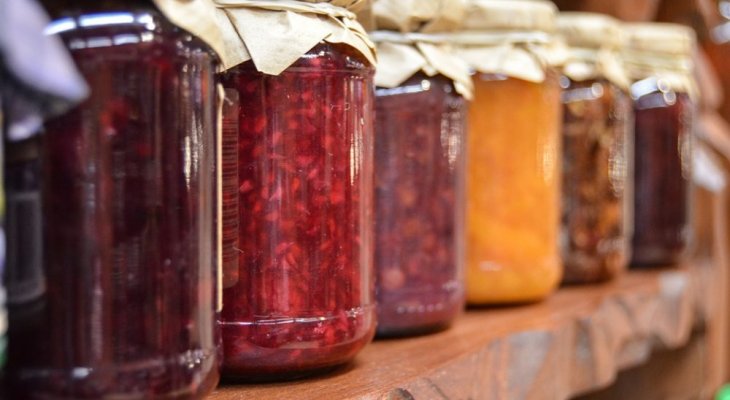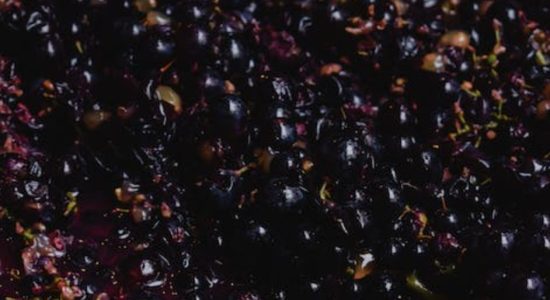Can Fruit Ferment On Its Own? Learn The Facts Of Fruit Fermenting

Recently while searching for information about winemaking, I stumbled upon a claim that winemaking doesn’t require any added yeast for the fermentation process.
This blog post will provide information on whether or not this is possible, and if so, how it is possible.
Can Fruit Ferment on Its Own? Any fruit can ferment on its own, with the right conditions. For a natural fermentation to start there has to be a presence of yeast and bacteria. The fermentation usually happens when the fruit is smashed and the yeast is allowed to react to the sugar content in the fruit juice, which can ferment into alcohol.
There are multiple things to consider if you are thinking about using fruit for the fermentation process of homemade wine.
If you are interested in a detailed answer, continue reading as I dive into what makes fruit ferment naturally and which fruits are best suited for this.
Read Also: What Happens If Wine Ferments Too Long?
So, Can Fruit Ferment on Its Own?
Alcoholic fermentation is a phenomenon that occurs when yeast converts sugar into mostly ethanol(alcohol) and carbon dioxide.
Fermentation is a process used in all types of alcohol making and has been developed throughout history.
Fermentation requires certain conditions that can happen either naturally or forced.
When brewing beer or spirits, yeast is usually added manually for the fermentation process. However, most fruits and berries have a natural presence of yeast attached to them, making them perfect for fermenting.
Fruits and berries also have various content of natural sugar, which we know is also necessary to make alcohol. Grapes are the most popular fruit variant because of their high sugar content, as well as their rather thick layer of wild yeast on the outside.
You may have seen incidents of drunk animals in nature.
Sometimes berries or fruits will ferment because they are either crushed on the ground or because they have a crack in the surface, giving the yeast access to the sugar inside.
This can create some rather fun incidents where birds will eat wild berries and get somewhat wasted. The effects aren’t that effective on humans since the alcohol content in these types of fruits or berries is rather low.
The Natural Fermenting of Wine
When grapes used for wine are ready for harvest, they have very potent sugar content. This sugar content is vital for the wild yeast fermentation process.
Most ripe grapes have a sugar content high enough to turn their juices into alcoholic liquid. Grapes also have a natural acidic property that keeps them more fresh and preserved.
Naturally making wine has been done for hundreds of years, and is one of the oldest alcohol making processes.
Essentially all you have to do is crush the grapes and make sure you place them in an airtight container to start the fermentation process.
The wild yeast is, as you know now, already on the berries themselves and covers their surface. When you crush the berries it kicks off a natural reaction where the yeast on the outside of the grapes reacts to the sugar inside.
Sugar and yeast go hand in hand when talking alcohol, making grapes perfect for natural fermentation.
The yeast absorbs the sugar and converts it to alcohol and carbon dioxide. The alcohol is in the liquid itself and the carbon dioxide is what you can visually see when the liquid bubbles or fizzes at the surface.
During this process, the wild yeast is responsible for creating the flavor in the wine and the texture and general body of the wine as well.
The increase in the alcohol level naturally stops the fermentation and gives you a sign that the process is over.
Ironically while yeast helps create alcohol, alcohol is also what kills the yeast. Once the alcohol levels are at a certain level the yeast will stop working and die out, this indicates that your fermentation process is coming to an end.
After fermentation, you bottle your wine and let it condition for as long as possible.
Like you probably know, the longer a wine ages the better it is considered to be in terms of quality and taste.
Most fruits and berries can ferment on their own, but helping them along the way is a good idea for better results.
To sum up, yes most if not all fruits and berries can ferment on their own in the right conditions. This practice is mostly used when making wine, and grapes are the best for this use.
You can find fermented fruits in nature, but mostly they are man made since it gives better results in general.
Making Your Own Fermented Fruit
Fermented fruit is homemade by many people for use in for example desserts, mixing for alcoholic beverages or a stand-alone alcoholic cider or wine.
This step by step guide will guide you through making your own fermented fruit with the use of a simple fermentation process.
Understanding fermentation
When making your own fermented fruit, you must first understand the basic fermentation process.
Don’t worry about any dangers, you can’t really go wrong when fermenting, it is a quite straight forward process, and even if you do it wrong the only thing that happens is you will have a bad-tasting fermented fruit.
A fermentation process for homemade fermented fruit generally involves these steps.
- Get a container you are able to make airtight. Add whatever fruit you feel like in the container and add a combination of water, sugar and a type of yeast or starter culture to kick off the fermentation process
- Seal your container and make sure it is airtight. You then leave it to ferment for anywhere between 2 days to a few weeks depending on how your chosen fruit reacts. Once you see bubbles forming at the top of your container it is a good indication that the fermentation is undergoing. Make sure you store your fruit at room temperature or colder and avoid any sunlight.
- When the bubbles settle down it is a sign that the yeast has more or less died out, and the fermentation process is nearing an end.
Once the fermentation is complete you should have a tasty condiment you can use for various foods or drinks.
Different fruits and their properties
When choosing a fruit to ferment, it is good to know how different fruits react and what fruits give the best results in general.
You can choose to use canned or frozen fruits since it makes sure that there are no hostile bacteria present compared to using fresh fruit.
Here are some bullet points with facts about different types of fruits to ferment and what they are typically used for.
- A popular type of fruit to ferment are plums peaches and apricots. These fruits keep a lot of their flavor when fermented as well as color. They are typically used for desserts and making chutney or you may use their juice as an extra spark to your alcoholic beverage.
- Exotic fruits with a lot of flavor like pineapples, mangoes or others are popular to ferment for the goal of making a tasty chutney. They are also commonly used for desserts.
- Grapes are a popular fruit to ferment and is, as most know, used heavily in wine-making. Home fermenting grapes for uses other than wine requires you either prick holes in their skin or cut them in half, to allow the yeast to react with the sugar inside.
Check out this article to know a bit more about grapes’ fermenting process.
- Apples and pears are also used when fermenting fruit at home. The downside of using these is that they turn brown rather quickly and gives a rather unappealing visual.
- Berries are also available for fermenting, but due to some berries containing a lot of seeds, it can make the fermenting difficult. Strawberries are often used because they give a great taste.
Other than these fruits you can add pretty much anything to give your finished fermented fruit a unique taste. Typically used flavors are the standard vanilla, licorice, cinnamon, mint and so on, often flavors seen in desserts.
NOTE: Don’t use powdered flavors, since they can get sticky and ruin the appearance and consistency of your fruit.
Read Also: 9 Best Wine Enthusiast Wine Fridges







